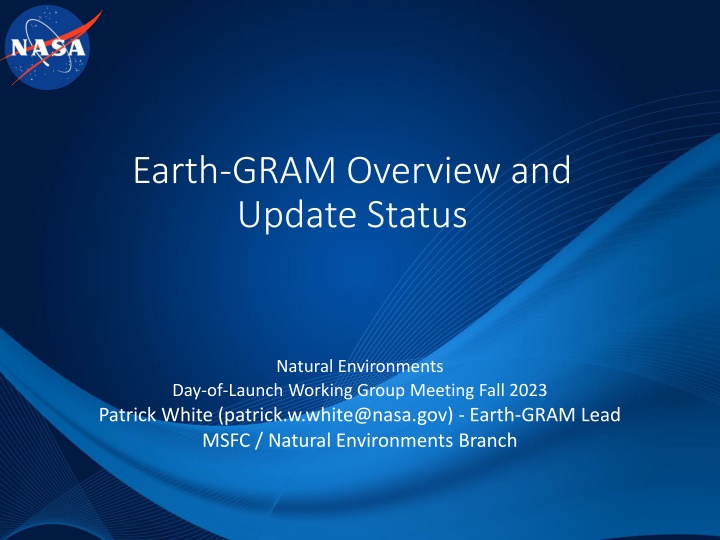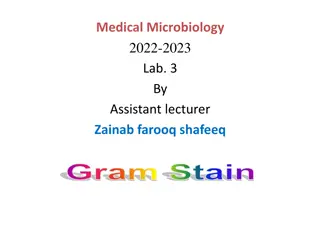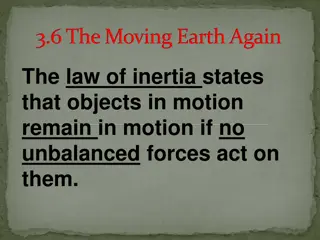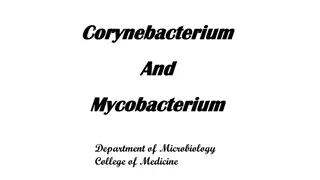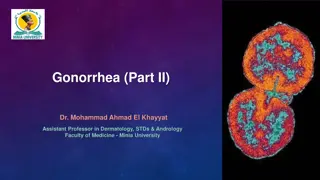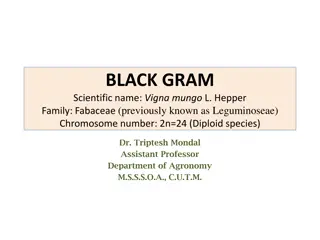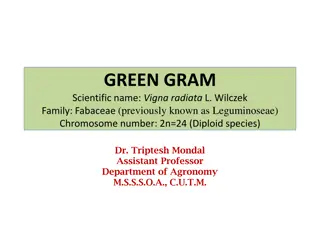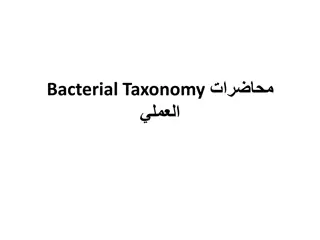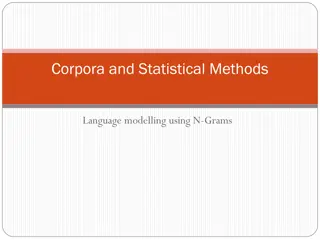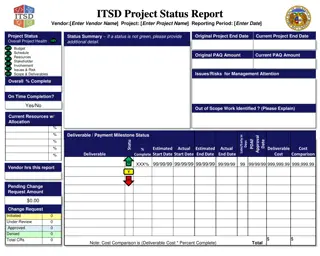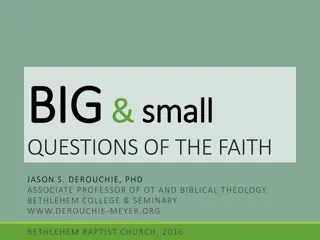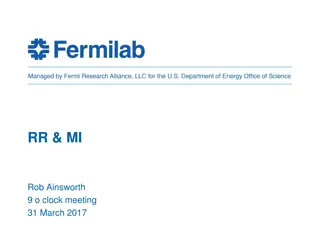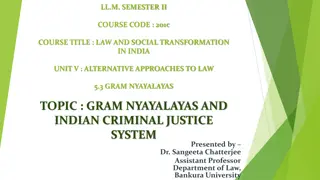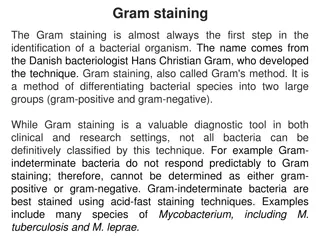Earth-GRAM Overview and Update Status
Earth-GRAM is undergoing significant upgrades including updates to the Global Reference Atmospheric Model suite. The upgrade team aims to modernize code, incorporate state-of-the-art data sources, enhance user support, and address limitations. The team comprises experts from NASA Langley Research Center, NASA Marshall Space Flight Center, and other institutions. The upgrades focus on a common object-oriented C++ framework, ensuring consistent constants, and enhancing atmospheric model outputs. The team is dedicated to advancing Earth-GRAM for improved research and applications.
Download Presentation

Please find below an Image/Link to download the presentation.
The content on the website is provided AS IS for your information and personal use only. It may not be sold, licensed, or shared on other websites without obtaining consent from the author.If you encounter any issues during the download, it is possible that the publisher has removed the file from their server.
You are allowed to download the files provided on this website for personal or commercial use, subject to the condition that they are used lawfully. All files are the property of their respective owners.
The content on the website is provided AS IS for your information and personal use only. It may not be sold, licensed, or shared on other websites without obtaining consent from the author.
E N D
Presentation Transcript
Earth-GRAM Overview and Update Status Natural Environments Day-of-Launch Working Group Meeting Fall 2023 Patrick White (patrick.w.white@nasa.gov) - Earth-GRAM Lead MSFC / Natural Environments Branch
Outline Goals Overview Current Global Reference Atmospheric Model (GRAM) Suite Planned Updates to Earth-GRAM Modern Era Retrospective Analysis for Research and Applications, Version 2 (MERRA-2) Global Atmosphere Upgrade Fall 2023 Gridded Forecast Upgrade Spring 2024 Thermosphere Update Fall 2024 Future Planned GRAM Suite Upgrades to Earth- GRAM 2
GRAM Upgrade Team Goals Modernize code GRAM Suite Include state-of-the-art data sources in the GRAMs as they are available Improve relationship and support with user group GRAM Virtual Workshop Nov 14th RSVP by Friday, November 10, 2023 via email to Hilary Justh (Hilary.L.Justh@nasa.gov) with 2023 GRAM Virtual Workshop RSVP in the subject line Include your name, affiliation, and contact information Understand and address limitations of the GRAMs 3
GRAM Upgrade Team NASA Langley Research Center NASA Marshall Space Flight Center Project Manager Soumyo Dutta Planetary Atmosphere Specialist Hilary Justh Code Architect James Hoffman Analytical Mechanics Associates Earth-GRAM Developer Patrick White GRAM Developer Lee Burns Jacobs Space Exploration Group Outer Planet GRAM Developer Kunio Sayanagi Implementation Expert John Aguirre Analytical Mechanics Associates Data Implementation Corey Walker Jacobs Space Exploration Group Paul Bremner 4
GRAM Suite Common object-oriented C++ framework Includes a common GRAM library of data models and utilities - Reduces duplicated code - Ensures consistent constants across all GRAMs - Simplifies bug fixes - Streamlines the interface with trajectory codes Includes C++ library with C and Fortran interfaces which can be incorporated in a trajectory (or orbit propagation) code All future GRAM Upgrades will be released in the GRAM Suite Legacy GRAMs GRAM Suite 5
Earth-GRAM Overview Earth-GRAM provides monthly mean and standard deviation for any point in the atmosphere Includes Monthly, Geographic, and Altitude variations Atmospheric variables output include: pressure, density, temperature, horizontal and vertical winds, speed of sound, and atmospheric constituents Used by engineering community because of ability to create dispersions in the atmosphere at a rapid runtime Often embedded in trajectory simulation software Earth-GRAM is not a forecast model Does not readily capture localized atmospheric effects Included within the GRAM Suite and available via the NASA Software Catalog https://software.nasa.gov/software/MFS-33888-1 6
Earth-GRAM Input (Update) Range Reference Atmosphere (RRA) Option Auxiliary Profile Input Option 7
Range Reference Atmosphere (RRA) Auxiliary Profile Option Earth-GRAM can use the RRA site specific databases Earth-GRAM 2021 includes 1983, 2006, 2013, and 2019 RRA databases 11 2019 RRA sites developed by MSFC/Natural Environments Branch for the Range Commanders Council Meteorology Group Climatology built from balloon and rocketsonde measurements MSFC - Natural Environments recommends the use of the 2013 and 2019 RRA database - Both databases follow a similar and well documented process - The 2019 RRA compiles new data in the period of record Auxiliary Profile option allows users the option to include profile of their choice 8
Earth-GRAM Perturbation Model Values From Earth-GRAM = Mean value + Large-scale perturbation + Small-scale perturbation Modeled as a wave Modeled as a stochastic (random) process Driven by observed standard deviation 9
Sample GRAM Output 1000 Monte Carlo Dispersed Profiles with January Monthly 3-Sigma Envelope Mean and Dispersed East-West Wind 10
MERRA-2 Update MERRA-2 reanalysis data set developed by Goddard Modeling and Assimilation Office (GMAO) Improved horizontal resolution: 0.625 x0.5 longitude-by-latitude grid (NCEP reanalysis I, 2.5 x2.5 currently used in Earth-GRAM) Improved altitudinal coverage: 72 model layers or interpolated to 42 pressure levels to 0.1 hPa (NCEP reanalysis I, 10hPa) MERRA-2 provides lower and middle atmosphere coverage and provides improvement over aging MAP data set. Input Observations: Surface: land, ship and buoy observations Upper Air: balloon, radar, wind profiler, satellite derived winds, and satellite retrieved measurements 11
MERRA-2 Development Source: Global gridded data set developed from MERRA-2 daily files from 1999 to 2018 Variables: Monthly means and standard deviations taken from daily files for thermodynamic, winds, and moisture variables at surface and 42 pressure levels. Time: Climatology developed every 3 hours (00Z, 03Z, 06Z, 09Z, 12Z, 15Z, 18Z, 21Z) and total average option Binary data files developed and read into GRAM Suite Additional files created at 2 x 2 horizontal resolution as optional small file sizes User input option to refine geographic scope of data Improves speed of runs 12
MERRA-2 V&V Regression testing performed through unit, system- level, and beta testing Unit Testing: Jim Hoffman has built test cases in code base to test on component-level System-level Testing: compared to all 2013 and 2019 RRA sites and ran test cases for various inputs. Beta Testing: Participation by LaRC and MSFC Validation: Comparisons to 2013 and 2019 RRAs 13
MERRA-2 Comparison Mean January MERRA-2 vs RRA/MAP Density Comparison 14
MERRA-2 Comparison Mean January MERRA-2 vs RRA/MAP Temperature Comparison 15
MERRA-2 Comparison Mean January MERRA-2 vs RRA/MAP East-West Wind Comparison 16
MERRA-2 Comparison Mean January MERRA-2 vs RRA/MAP North-South Wind Comparison 17
Gridded Forecast Update Partnered with LaRC to develop capability to integrate gridded forecast data in Earth-GRAM to support balloon drift studies Have currently developed capability to read in and process Global Forecasting System (GFS) forecast data to replace the monthly climatological data Horizontal resolution: 0.25 Data at surface and on 42 pressure levels up to 0.01 mb Would like to incorporate ability to use other forecast sources. Plan to provide beta version to LaRC by fall 2023 18
GFS Compare, Cape Canaveral, FL Comparison of East-West Wind: MERRA-2 August Monthly Mean vs GFS 08/03 19
GFS Compare, Cape Canaveral, FL Comparison of Temperature: MERRA-2 August Monthly Mean vs GFS 08/03 20
Future Upgrades Application Program Interface (API) Python Fall 2024 GRAM Suite Release MATLAB Spring 2024 GRAM Suite Release Thermosphere Update Update to Naval Research Lab Mass Spectrometer Incoherent Scatter (NRLMSIS) 2.1 to replace MSIS Targeting Fall 2024 GRAM Suite Release Boundary Layer Improvements Improve BL horizontal winds: mean log wind speed profile Improve topography resolution Should improve parachute case and launch abort case environment 21
Summary Released MERRA-2 update to GRAM Suite Fall 2023. Good comparison to RRA data and improvement to middle atmosphere environment Improvement in horizontal resolution, altitudinal extent, and hourly data selection Plan to release beta version of Gridded Forecast update by Fall 2023 (Full Release to GRAM Suite, Spring 2024). Supports balloon drift studies Likely applicable for post-flight atmosphere reconstruction Plan to release APIs to GRAM Suite Python Fall 2023 MATLAB Spring 2024 Thermosphere Upgrade Fall 2024 GRAM Suite Release Future updates planned to address Earth-GRAM limitations Feedback regarding Earth-GRAM encouraged and welcomed 22
